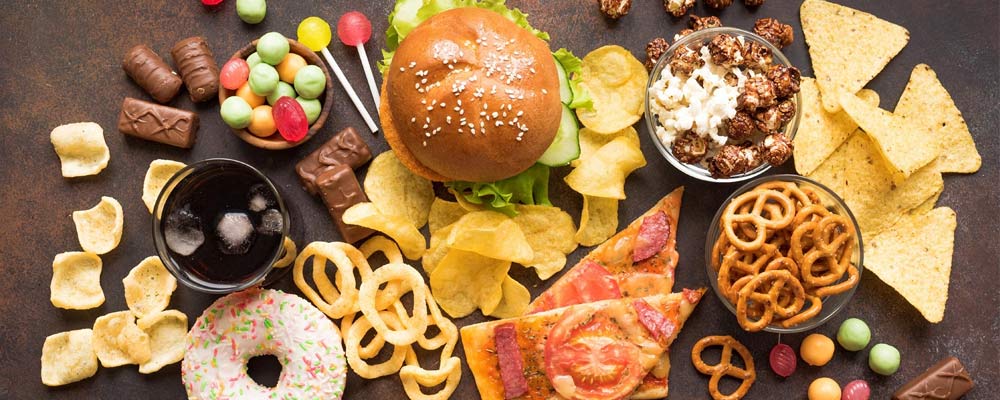In recent years, there has been a noticeable increase in the consumption of processed foods among children. This trend raises significant concerns about its impact on their health and development. Understanding these effects is crucial in guiding our young ones toward healthier dietary choices.
What Are Processed Foods?
Processed food often implies a food item with additives like artificial colors, flavors, or chemicals. However, its definition varies. The U.S. Department of Agriculture (USDA) considers any food that has been altered from its natural state as processed. This includes operations like washing, cutting, heating, and adding preservatives or other additives. Under this broad definition, almost all supermarket foods, including items like apples, which undergo multiple processing steps, are categorized as processed. It’s therefore useful to distinguish between different levels of food processing.
Types of Food Processing
A popular system to classify processed foods was introduced in 2009, called the NOVA classification. It lists four categories considering the degree to which a food is processed and the purpose of these modifications:
1. Unprocessed or minimally processed foods

Unprocessed foods include the natural edible food parts of plants and animals. Minimally processed foods have been slightly altered so they can be more easily stored, prepared, and eaten; this processing level does not substantially change the nutritional content of the food. This allows the food to be preserved for more time and remains safe to eat. Many fresh fruits, vegetables, whole grains, nuts, meats, plain yogurt with no added sugar or artificial sweeteners, fresh and dried pasta, tea, coffee, and milk fall into this category.
2. Processed culinary ingredients

This category includes food ingredients used in kitchens to prepare and season foods that are derived from minimally processed foods by pressing, refining, grinding, or milling. They are typically not eaten on their own but are used to prepare other foods. Examples include oils from plants, seeds, and nuts; vinegar made by acetic fermentation of wine; honey extracted from combs; and syrup from maple trees without added flavors or stabilizers.
3. Processed foods

In this category, the processing increases the durability of foods or modifies or enhances their flavor and texture. Processed foods derive from either of the two previous groups but have added salt, sugar, and/or fat. Some canned fruits and vegetables, some cheeses, freshly made bread, and canned fish are examples.
4. Ultra-processed foods

These are foods from the prior group that go beyond the incorporation of salt, sugar, and fat to include artificial colors and flavors, and artificial sweeteners that promote shelf stability, preserve and enhance texture, and increase palatability. Several processing steps using multiple ingredients are involved in an ultra-processed food. Ultra-processed foods are typically ready-to-eat with minimal additional preparation. Examples are sugary drinks, cookies, chips, and breakfast cereals, some frozen dinners, and luncheon meats.
Physical Health, Mental and Behavioral Effects
The high calorie, sugar, and fat content of processed foods contribute significantly to childhood obesity, a growing global concern. This weight gain can lead to various health issues, including type 2 diabetes, heart disease, and other chronic conditions. Moreover, the lack of essential nutrients can affect physical development in children. High sugar and additive content in processed foods may impact cognitive functions and behavior, potentially exacerbating attention disorders and mood swings. These dietary choices can influence children’s mental well-being and learning abilities.
Strategies for Healthier Eating Habits

Encouraging healthy eating habits, especially for children, is essential. Parents can involve children in meal planning and cooking, offering healthier alternatives to processed foods. Educating children about reading food labels and understanding nutritional information is also crucial.
More time may be needed to prepare healthy food than just opening a can or popping a frozen container in a microwave, but the rewards may be fresher flavors, increased nutrients, and fewer additives that have no nutritional benefit.
Put it into practice: Ideas for a day of minimally processed meals for kids
Breakfast:
- Look for breads that include whole grain flour as the main ingredient and that contain minimal additives and preservatives.
- Swap out butter spreads for mashed avocado or nut/seed butter.
- Choose breakfast cereals with less added sugar, plain shredded wheat, and low-sugar mueslis. Add nuts, chia seeds, flaxseeds, and fresh diced fruit to cereals for a heartier meal.
Lunch/Dinner:
- Prepare more home-cooked meals using fresh ingredients or processed frozen or canned ingredients that are low in added sugar, sodium, and saturated fat.
- Choose fresh poultry and fish, dried or low-sodium canned legumes, dry or frozen plain whole grains, fresh or frozen unseasoned vegetables, and herbs.
Snacks:
- Try fresh sliced fruits, plain or low-sugar yogurt, unsalted nuts, roasted chickpeas or other beans, edamame, or homemade trail mix with nuts, seeds, and dried fruit.
The bottom line
The rising consumption of processed foods among children is a pressing issue, with significant implications for their physical and mental health.
Food processing is a very broad spectrum that ranges from basic technologies like freezing or milling to the incorporation of additives that promote shelf stability or increase palatability. As a general rule, emphasizing unprocessed or minimally processed foods in the daily diet is optimal. That said, the use of processed and even ultra-processed foods is the choice of the consumer, and some pros and cons come with each type. The Nutrition Facts Label and ingredients list can be useful tools in deciding when to include more processed food in one’s diet. There is evidence showing an association between certain types of food processing and poor health outcomes, especially low-nutrient ultra-processed foods that contain added sugars, excess sodium, and unhealthful fats. But there also exist ultra-processed foods that have low amounts of these ingredients while being fortified with beneficial nutrients such as calcium, protein, fiber, and vitamins B and D.
Awareness and education are keys to promoting healthier diets and lifestyle choices for our younger generations.
Source: https://www.hsph.harvard.edu/

